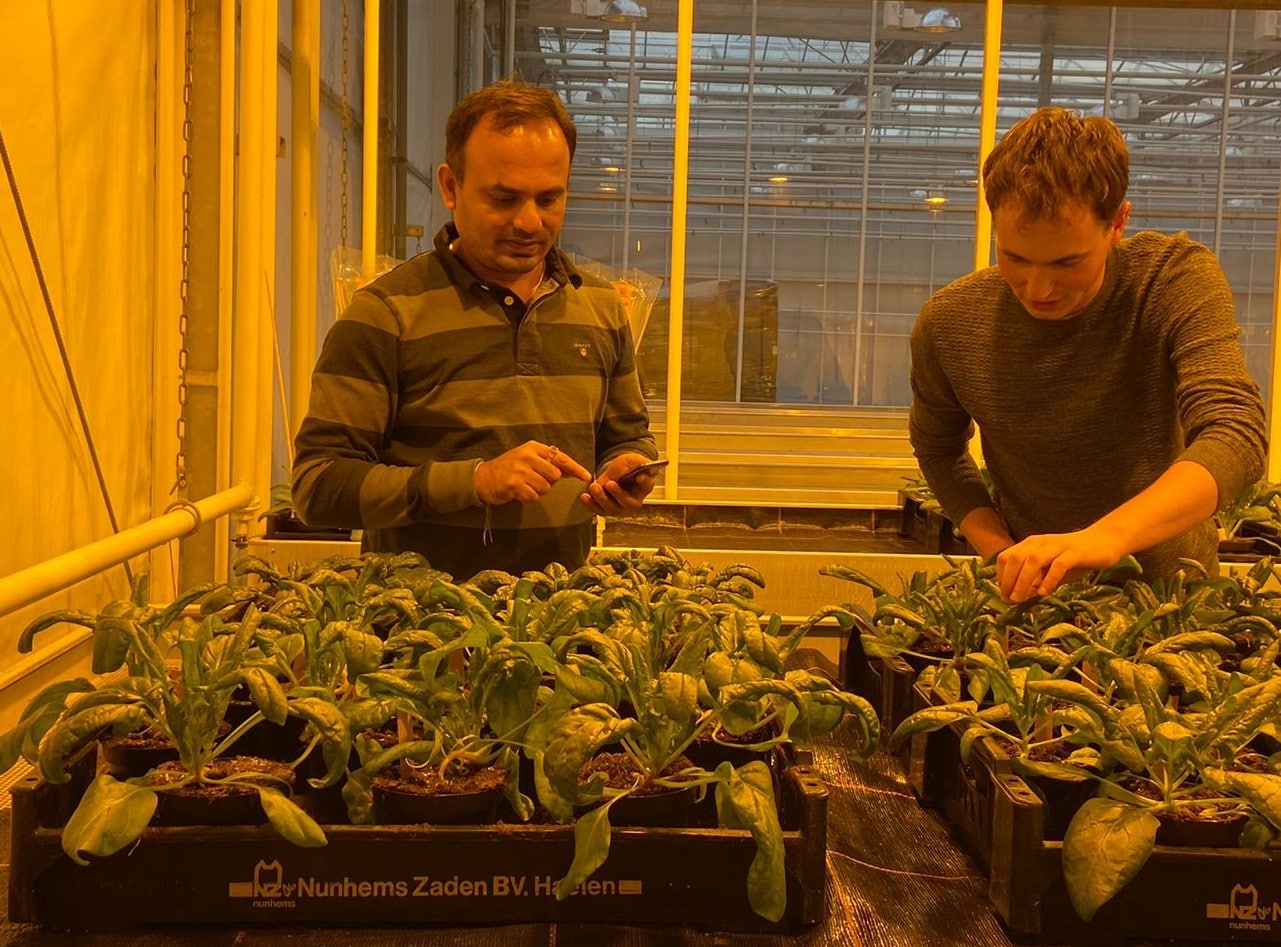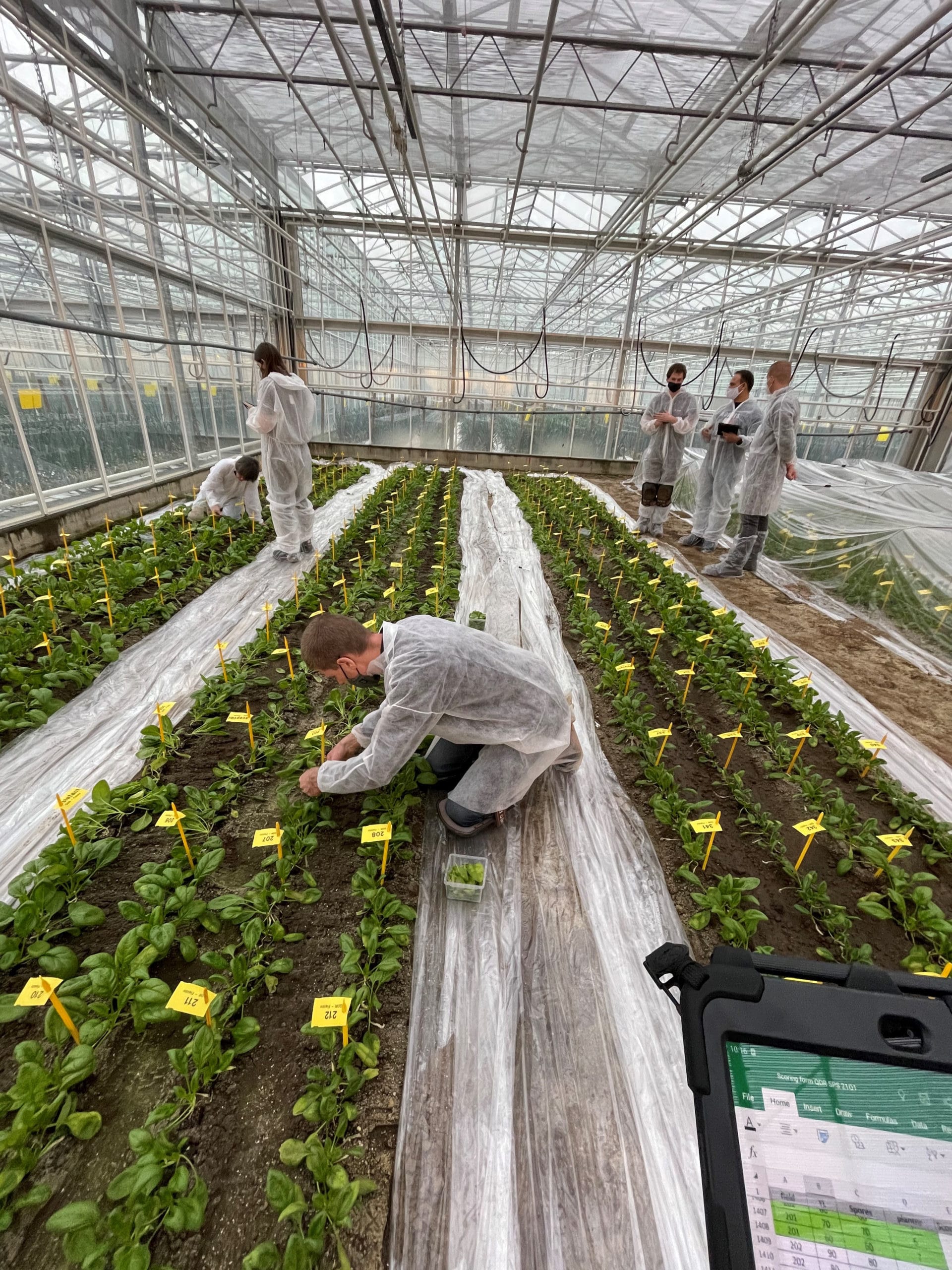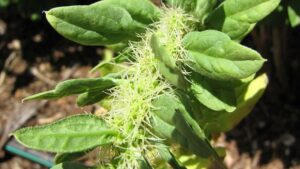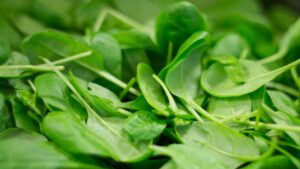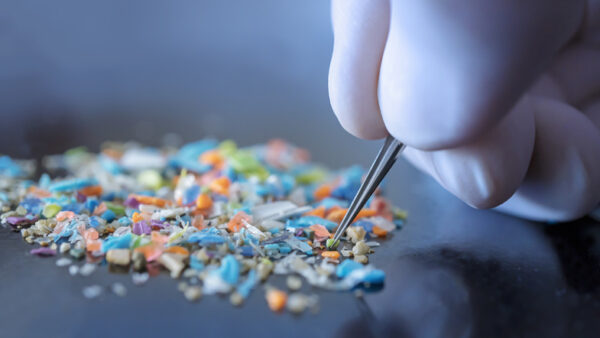He was right, Popeye! He knew all along that spinach is one of the most nutritious vegetables consumed worldwide with lots of health benefits. The crop is an excellent source of crucial minerals, vitamins, plant proteins, fibres and omega 3’s. Apart from this, scientific studies show that in humans, spinach is known to boost immune levels, aid in skin care, regulate blood pressure and lots more.
To learn more about what it takes to develop new spinach varieties, European Seed spoke with spinach breeders of seven of the major spinach breeding companies in the world.
TOP BREEDING TARGETS
“We are dedicated to breeding for qualities that are important to our customers and for consumers. In our spinach program, our pathology teams pay special attention to downy mildew (DM) resistances and leaf spots,” says Ben Hunter, Global Spinach Collaborative Breeding Pipeline Team Lead at Bayer Crop Science. He adds they also focus on yield and leaf quality including leaf count and leaf thickness as well as bolting resistance that results in robust varieties for their processing customers. For baby leaf products they perform a strong selection on leaf shape, colour and savoy structure.
Phillip Simons, spinach breeder at BASF Vegetables, remarks that BASF tries to combine full resistance against downy mildew with high yield and good cultural value. They consider traits like leaf colour, leaf texture, savoy, plant erectness and cup are very important. “Tolerance for bolting is needed for summer varieties in countries with long day lengths. By testing our varieties in different regions and seasons we select for the most stable ones,” he explains.
Syngenta’s spinach breeder, Rinse Jaarsma, largely concurs by mentioning that their major breeding goals are disease resistance; type (leaf shape, colour); bolting and flowering for seed production and, last but not least, leaf yield.
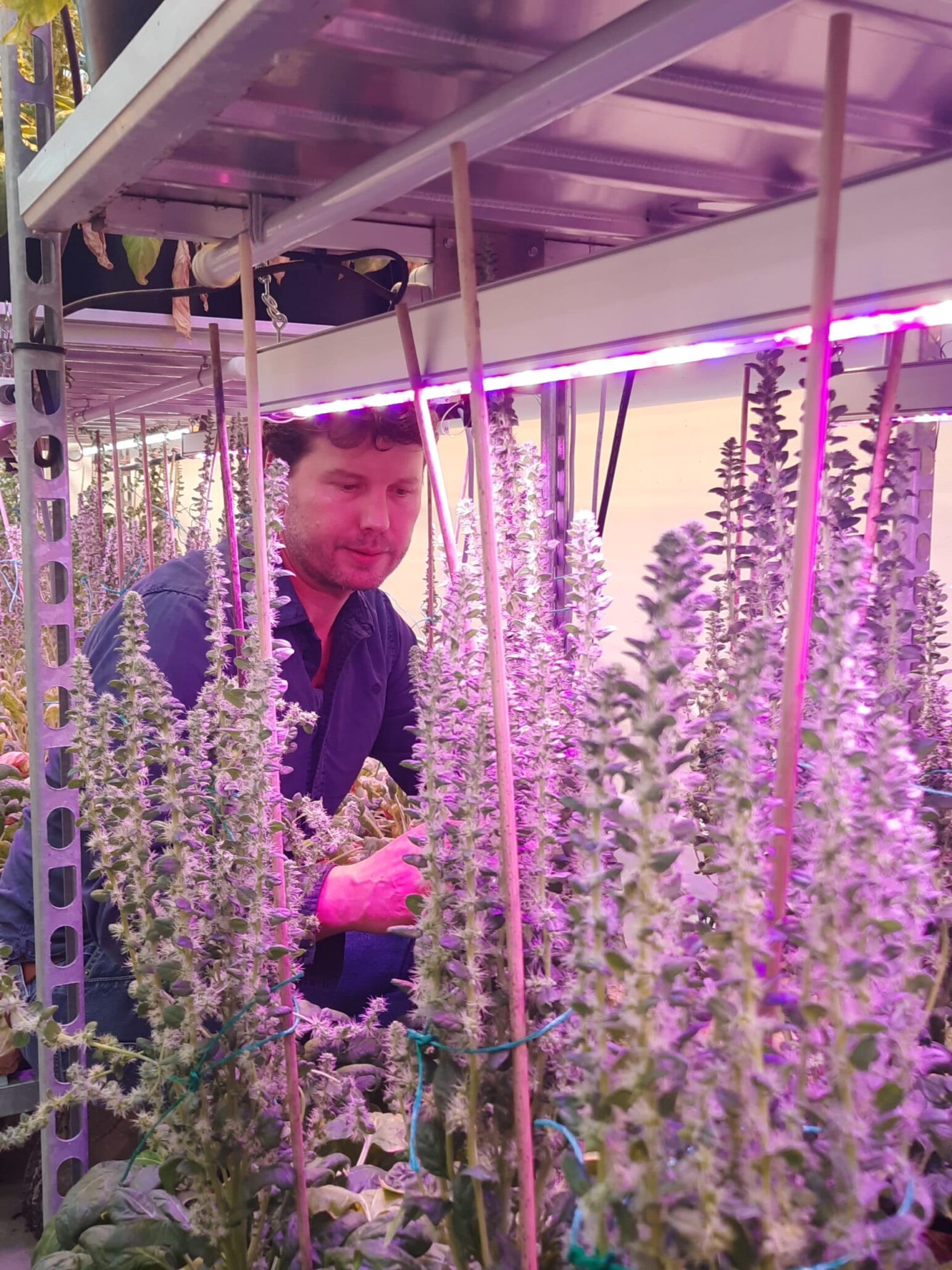
“Our focus is on baby leaf, mainly for the market on the west coast of U.S., with spin off to several other markets in the world,” says Raimon Laan, Spinach Breeder at Bejo Zaden. He clarifies that, by far the most important breeding goal is resistance against downy mildew (Peronospora effusa). Presently there are 19 denominated strains of this disease and every season or year there is a possibility of new breaking isolates. “It is always a puzzle to combine the resistance patterns of different parent lines to a new hybrid. Besides that, colour (dark, but not too dark), equal and upright growth and texture are important. Semi- and a quarter savoy is preferred at the moment. It gives volume in the bag and the leaves do not stick together,” he explains.
[tweetshare tweet=”By far the most important breeding goal in spinach is resistance to Downy Mildew.” username=”eyJtZDUiOnRydWV9″]
Managing Director of DeSeed Denmark A/S, Ole Johansen, lists four major breeding goals for his company:
- Disease resistance — downy mildew, white rust, Stemphylium, Fusarium, Pythium, all are fungal diseases some of them are also soil borne. Poor rotation practices in our key markets makes it important to breed for resistance but we also think it is important to influence growers to improve rotation practices because disease resistance cannot solve all problems especially with almost zero fungicides available.
- Visual appearance (leaf shape, leaf colour, shiny leaves, semi savoy leaves for baby leaf while more smooth leaves for bunching/industry, upright leaves with the right leaf to petiole ratio).
- High growth speed for cold late autumn/winter segments and slow growth speed for summer segments (slow growing leaves remain thick which means longer field standing ability and longer shelf life)
- Yield, which is to a large extent related to high germination and seed vigour.
He underlines that there are many other breeding goals, but qualifies the four above as the key goals.
Spinach is a popular low-calorie leafy vegetable crop with increasing demand in healthier diets worldwide, owing to its richness in nutrients, vitamins, proteins, and flavonoid compositions. For Dew Kumari Sharma, Spinach Breeder at Vilmorin-Mikado, the top breeding goal is to breed varieties with good horticultural traits (colour, shape, texture, size, yield, and wider adaptability) combined with an excellent resistance package especially to downy mildew, Fusarium, and leaf spot diseases, among others. “Globally, spinach can be grown all year round, so for winter we need fast-growing vigorous varieties and for summer, we need varieties with controlled growth habits with high tolerance to bolting and long field-holding ability,” she says.
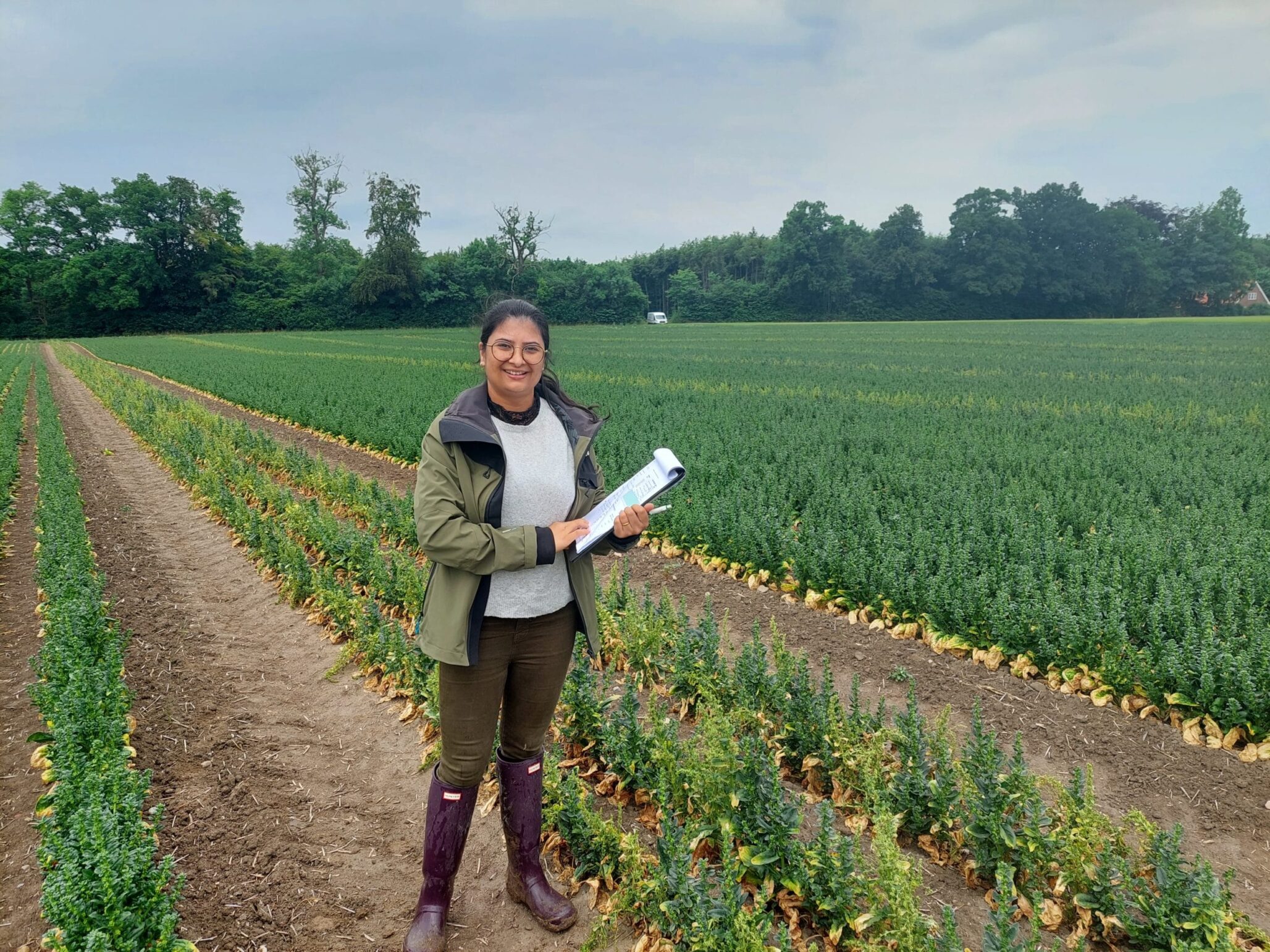
Johan Rijk, Senior Spinach Breeder at KWS Vegetables B.V. clarifies that resistance towards the pathogen downy mildew is the number one breeding goal in spinach breeding. “Depending on the market segments and climate, our focus is on vigour, bolting resistance, winterhardiness, leaf-spot resistance, white-rust resistance, Fusarium resistance, colour, texture, abiotic stress tolerance and other quality traits,” he adds.
PARTICULAR BREEDING CHALLENGES OF A LEAFY CROP
The environmental impact on leafy crops is relatively high. “Hence choosing the right location for selection and screening is quite challenging,” says Simons.
The challenge is to keep leaves fresh and attractive as long as possible. Jaarsma shares that his company is achieving this by offering growers varieties with the highest resistance package to leaf diseases. “In addition, the varieties need to be able to grow in different regions of the world during different seasons and weather conditions.”
“The biggest challenge is the rat race against the downy mildew,” says Roel Veenstra, Crop Research Manager Brassica, Lettuce, Beans & Spinach at Bejo Zaden, explaining that whenever there is resistance, the mildew is able to adapt and break through the resistance genes involved.
In some companies it may be a challenge to attract highly professional breeders to breed a leafy crop as it may be less prestigious than breeding fruit vegetables. “However, in Denmark spinach is a very popular crop and 75 per cent of the worlds hybrid spinach seed is produced here so for our company it is easier to find enthusiasm for breeding spinach,” says Johansen.
Within Vilmorin-Mikado, spinach is a recent addition to their already existing leafy range. Kumari Sharma considers it an advancement towards making their leafy salad portfolio more complete and providing attractive combinations both for growers as well as processors and consumers. “The spinach market is highly professional. The market challenges are like other leafy species because they are highly perishable products, where the need for higher shelf-life is transversal,” she says.
In terms of breeding, the main difference is that varieties that are bred in most leafy salad crops are open pollinated (OP) while in spinach, it is F1 hybrids. Another challenge with spinach is that it is a highly wind-pollinated and day-length sensitive crop.
Globally, the area for spinach seed production is less flexible because the hybrid seed production is concentrated in a few countries. For example, more than 85 per cent is in Denmark due to mild summers and long days (16h). “Genetically spinach is a very flexible species for the hybrid breeding program because it is dioecious (male and female plants exist separately; although monoecious lines do exist) and the phenomenon of sexual reversal makes it possible to produce individual lines‚Äô seeds,” says Kumari Sharma.
Johan Rijk indicates that leafy crops normally have short growing cycles, meaning the use of chemicals is more restricted and limited than in fruity crops with a longer growing cycle. “Therefore, the need and development of resistances to certain diseases becomes even more basic and urgent. Advantage is that we quickly see the results of testcrosses since one doesn‚Äôt need to wait until fruits are developed. The challenge is thus to be as fast as possible,” he says.
“Indeed, the soft tissue of spinach is very susceptible to many leaf diseases including Colletotrichum, Cladosporium, and Stemphylium,” says Hunter.
DIFFERENT LEAF TYPES FOR DIFFERENT MARKETS
There are three different leaf types: Oriental, Smooth and Savoy. Oriental is preferred in Asia for bunching; smooth for processing in Europe; smooth and savoy for baby leaf in Europe, U.S., Australia and New Zealand.
Jaarsma explains that depending on the market segment, they breed for different leaf types. He points out that there are three main segments: baby leaf, bunching and processing. “For baby leaf, the market demands relatively small and very round leaves with different levels of savoyness, ranging from smooth leaves to savoyed leaves and a dark green colour. The largest markets for the baby leaf segment are the U.S. and EU,” he adds.
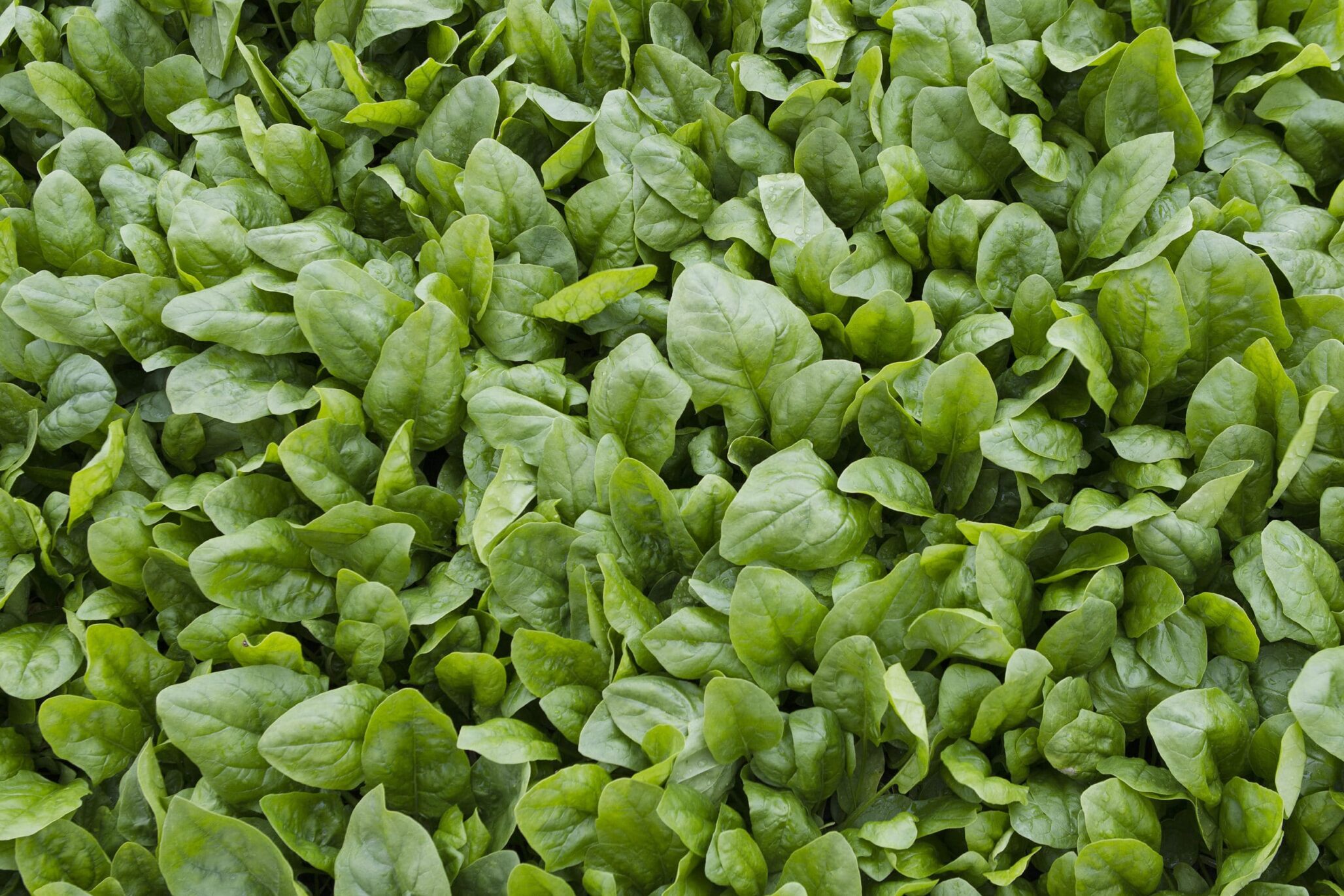
Laan indicates that they breed for both smooth leaves and semi savoyed, mainly for the baby leaf market. “For bunching the leaf type needs to be oriental,” he adds.
At his company, Johansen mainly breeds semi savoy leaf-types (crinkly) for baby leaf, and smooth for bunching and industry. “Round leaves for baby, more oval for bunching, while smooth and pointed leaves are used for some far east markets,” he adds.
“We breed for both the baby leaf market (consumed raw) and the bunching market that consumes cooked spinach,” says Kumari Sharma.
The baby leaf market in Europe and America demands a European type, i.e., round/oval-shaped smooth or semi-savoy leaved varieties with an excellent DM resistance package.
The bunching market in Asia prefers an Oriental-type, i.e., triangular to pointed leaved varieties that need to be very dark, shiny smooth, and tasty.
According to Johan Rijk, it depends on the market, but for baby leaf his company breeds for both semi-savoy and smooth, while for processing and bunching spinach they breed for smooth leaf types only.
For many years the market was focused on the popular smooth leaf type explains Hunter. “In 2011, we introduced savoy materials as an innovation to the baby leaf market. This now makes up a significant portion of the market we actively breed for.”
“Our main focus market is baby leaf market,” says Simons. Semi savoy leaves are very much appreciated because it gives more volume in a package. “Our program is diverse, and we also cover bunching and processing from smooth to savoyed leaves. We see different wishes, not only per country or region, but also between growers. This means we need to keep diversity in our program and it depends on the final use of the product (salads, cooked),” he adds.
Plants in the bunching segment should be taller than baby leaves and have a more upright plant habit with leaves larger than baby leaves. “Round, oval and serrated leaves are accepted depending on the market. Furthermore, the petiole, connecting the leaf to the plant is long, so harvested leaves can be bound together in a bunch. For this segment the colour should also be dark green. The main countries for bunching are Turkey, China, Mexico and Middle East,” says Jaarsma.
He continues that for the processing market this typology is less important, since the spinach is being processed to canned and frozen products. “However, the leaves healthiness is important to provide large volumes of high-quality leaves to the processing factories. Additionally, leaves are as large and thick as possible to reach high yields and are preferably non-savoyed to avoid accumulation of soil dirt in the crinkles that comes along with savoyness. The colour may range from lighter green to darker green. The main market for the processing segment is EU,” adds Jaarsma.
TIME TO DEVELOP A NEW VARIETY
“It is difficult to say how much time it takes,” notes Veenstra. After the first cross with a wild source, a breeder needs four to five generations of backcrossing with a quality parent line. “After that you need to make test crosses. So at least six generations of crossings, preferably with two to three generations per year. The problem with the wild species can be dormancy, spikey seed and nicking with the back cross parent. Usually, it takes three to five years I would say,” he adds.
Johan Rijk and Jaarsma concur that it takes between three to six years, where Rijk adds that it also takes a few million Euro to develop a whole range of new spinach varieties.
[tweetshare tweet=”It can take 3 to 7 years to develop a new spinach variety.” username=”eyJtZDUiOnRydWV9″]
Johansen mentions that roughly it takes six years if one includes the time to produce pre-basic and basic and commercial seed. “The actual breeding may be done in 4 years but spinach is large seeded so it takes time to produce pre-basic and basic and commercial seed before the seed can be sold,” he clarifies.
A hybrid breeding program requires first to breed the parental lines and find the right combinations to create new hybrids. “The time taken to develop a new variety from research up to market depends on how mature the breeding program is. For a young breeding program, it can easily take between six to eight years,” says Kumari Sharma.

Collaborative Breeding Pipeline Team Lead at Bayer. Photo: Bayer
Hunter points out that on average every two to three years a new DM race develops which leads to the need to deploy new resistance. “It can take seven years to develop a new variety.”
A large portion of the investment in a spinach breeding program goes in the development of full resistance packages against downy mildew. Screening wild accessions and cultivated materials with constantly evolving races demands ample resources from phytopathology and pre-breeding. “Understanding how new resistance genes combine with the existing ones requires efforts from genomics and our molecular breeding team. Finally, the commercial breeding team combines all options with cultural value and adaptability to various growing seasons. This whole process can take five to seven years,” says Peter Visser, R&D Crop Lead for leafies, artichoke, okra, asparagus, celeriac at BASF’s vegetable seeds business.
ALIGNMENT WITH GROWERS AND CONSUMERS
Johansen indicates that his company makes sure to align breeders, product managers and growers who market directly to supermarket chains.
“We build strong relationships with growers year-round through visits with breeders and technical teams. We also bring growers to our Bayer sites to showcase products and engage with them in field days and innovation events,” says Hunter.
Visser says BASF is monitoring the needs of their customers and consumers, and they include these traits in their selection criteria. “We anticipate on market trends or future threats and in dialogue with our customers, we design solutions,” he says.
“Our company approaches the market requirements in two different manners; A) Agronomical aspects, like leaf type, are checked locally by growers testing our new introductions directly in the key markets to make sure that it suits the needs of growers and processing factories,” says Jaarsma. “And B), Disease resistance aspects are closely monitored at growers by collecting samples from the field which are subsequently analysed in our laboratories. By doing so, we are monitoring the existing and known diseases and secondly monitoring new diseases appearing during the season to anticipate to new threats.”
Laan is clear. “We have our trials in practice, at big spinach producing companies. After evaluation we usually invite the grower and the dealers who distribute our varieties. Besides that, it is always good to visit some big supermarkets and go to the vegetable section.”
“We align our breeding with consumers, by having breeders that are close to the market; our breeders visit the key-markets multiple times per season and stay updated with the latest developments,” states Johan Rijk.
BIGGEST HURDLES
Kumari Sharma points out that spinach baby leaves are commercially produced in a high-density planting (five to 10 million seeds/ ha) and short crop cycles (30 to 45 days depending on season) leading to year-round production. “Such an intense cultivation system leads to a dense canopy cover which increases humidity and creates ideal conditions for disease development,” she explains. Therefore, continuously emerging DM races break down the resistance genes deployed in the newly released varieties. At the same time, other fungal diseases like leaf spots are increasingly being reported in recent years. “The biggest challenge for a breeder is to keep pace with the rapid evolution of new pathogens and races while breeding is a slow process. This setback also applies to other stakeholders, including growers and the seed industry,” she adds.
Hunter shares this view and indicates that among the team’s biggest challenges is the ability to meet grower and consumer needs while at the same time working to overcome potential disease quickly. In addition, the ability to do this rapidly and efficiently is of the utmost importance.
Johan Rijk and Veenstra agree that the biggest hurdle is to combine the right downy mildew resistance genes with the right ideotype (particular set of traits demanded by a specific market). Johansen indicates that achieving full resistance to a range of diseases is among the big hurdles.
“Next to the above-mentioned challenges, a big hurdle for the breeder is seed producibility. Spinach has a complex flowering behaviour which is highly inducible by environmental conditions and therefore comes with challenges in seed production,” articulates Jaarsma.
CHANGES OVER DECADES
The first major change was from open pollinated to hybrid varieties. The disease focus has remained on downy mildew, but the rapid emergence of new DM variations leads to a crucial need for speed to market. “This has been supported by significant investments in various breeding technologies such as marker assisted selection, rapid cycling back crosses and genomic insights,” says Hunter.
Simons adds that the transition from open pollinated (OP) varieties to hybrids gave breeders better options to combine traits. “Since 2000 we have witnessed fast evolution of new races of downy mildew which took considerable efforts to keep up with the full resistance,” he explains.
Downy mildew pressure has increased dramatically in the last decades. “Nowadays, a new isolate of downy mildew is appearing every one or two years,” says Jaarsma. As a result, it has become more and more important to add new resistances to the existing germplasm additionally to agronomic traits. “We use new technologies to increase the speed of introducing new resistances into our germplasm.”
[tweetshare tweet=”Downy mildew pressure in spinach has increased dramatically in the last decades, with a new isolate of downy mildew appearing every one or two years.” username=”eyJtZDUiOnRydWV9″]
“In the past all the resistance breeding was done with disease tests against downy mildew. Nowadays, it is more a combination with molecular resistance patterns and check the resistance with the pathogen at certain steps along the road,” says Veenstra.
About 20 to 30 years ago, spinach was mainly used for bunching and industry, but then the baby leaf trend started, and this made a big change in breeding targets. This is because baby leaves should be semi savoy, cotyledons should be small and horizontal, leaves should be round etc. “It was always important to breed spinach for disease resistance. But due to the huge areas with intense production of spinach for baby leaves, and industry breeding for resistance to many different kinds of diseases has become more important,” emphasizes Johansen.
In the past decade, some aspects have been changing in general, e.g., consciousness about healthier diets and sustainable environments, leading to a ban on many effective chemicals used in conventional systems in the past. “An equally important fact is that organic spinach production is increasing (e.g., in the U.S., it comprises around 50 per cent of the total spinach production), where diseases represent a significant constraint and management options are somewhat limited. Besides, due to climatic uncertainties, abiotic stresses are also increasing,” elaborates Kumari Sharma.
Breeding programs in general evolve, also spinach breeding programs. “New technologies, such as marker-assisted-selection, allows us to speed-up the breeding program and make it more efficient. In this way we can reduce the time to market. Also, market demands change over time, so we have to adapt our selection criteria’s as well,” explains Johan Rijk.


